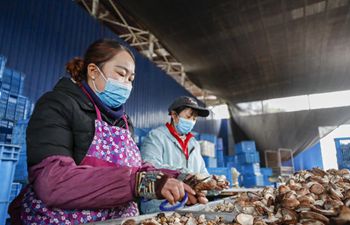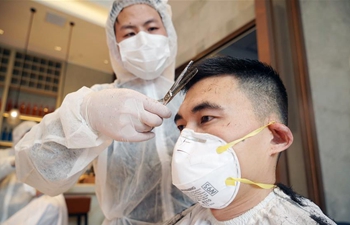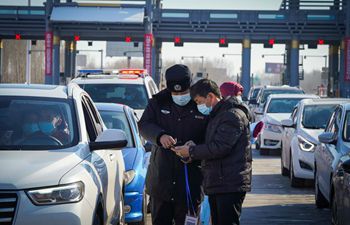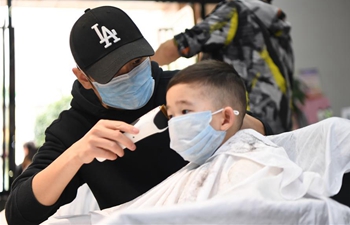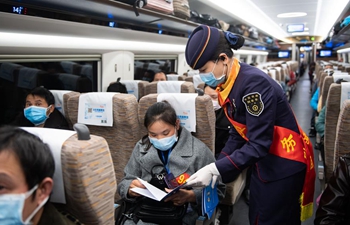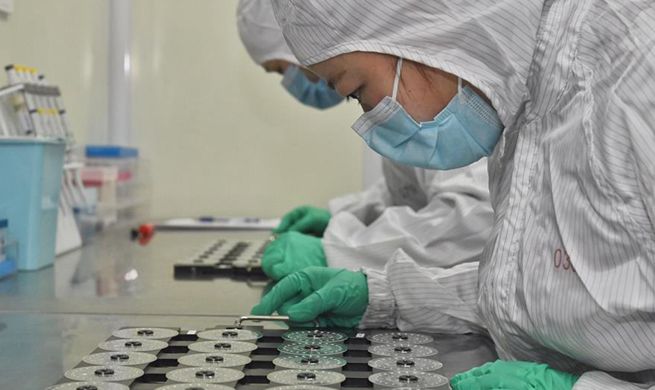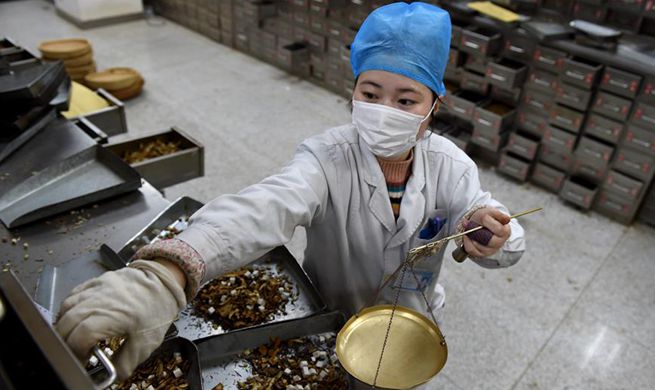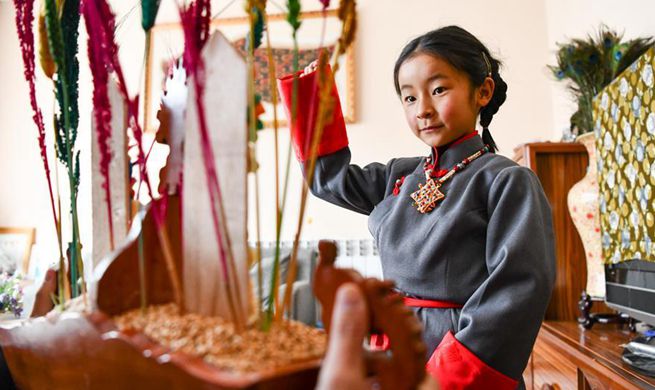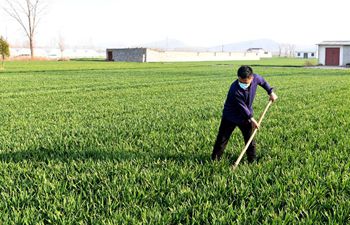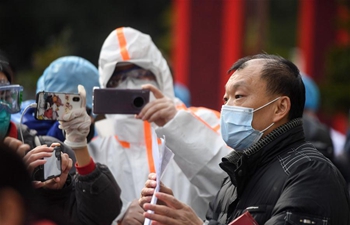DHAKA, Feb. 24 (Xinhua) -- Bangladesh has made significant progress in women and children's development alongside making headway in areas of health, nutrition, water, sanitation, hygiene and education, according to a latest survey.
According to the Multiple Indicator Cluster Survey (MICS) 2019, unveiled on Monday, major improvement was made in stunting among children aged under five, which came down to 28 percent in 2019 from as high as 42 percent in 2013.
Prevalence of underweight among these children also dropped to 22.6 percent from 31.9 percent, it showed.
Under-five child mortality rate also witnessed a major fall to 40 percent from 58 percent with infant mortality rate falling to 34 percent from 46 percent six years ago, the MICS 2019 said.
Bangladesh Bureau of Statistics (BBS) and UNICEF jointly conducted the survey in between Jan. 19 and June 1, 2019, with random sampling among 61,242 households in 64 districts, national news agency BSS reported.
According to the MICS 2019, literacy rate among women, aged between 15 to 24 years and who attended secondary or higher education, rose to 88.7 percent in 2019 from 82 percent in 2013.
Primary school completion rate among children improved from 79.5 percent to 82.6 percent. New indicators of lower secondary school and upper secondary school completion rates were found to be 64.7 percent and 29.4 percent respectively.
Households' access to electricity rose to as high as 92.2 percent from 61.5 percent six years ago. Use of improved sources of drinking water increased to 98.5 percent from 97.9 percent while availability of drinking water rose to 96.9 percent from 74.2 percent.
Use of basic drinking water services - an SDGs indicator - was found to be 98 percent in Bangladesh. The population using basic sanitation services was found to be 64.4 percent at the national level with nearly similar level in urban and rural areas.
Use of improved sanitation facilities increased to 84.6 percent from 76.9 percent, and in handwashing facility with water and soap jumped to 74.8 percent from 59.1 percent six years ago.
Use of basic hygiene services was found to be 75 percent at the national level, including 87 percent in urban areas and 71 percent in rural areas. The number of households consuming iodized salt expanded from 72.6 percent to 76 percent in the said period.
The number of households possessing at least one telephone, either fixed or mobile, increased to 95.9 percent which was 87.2 percent in the previous MICS. Computer possessing households also rose to 5.6 percent from 3.4 percent.
Internet access was found to be among 37.6 percent households in 2019 while ownership and use of of mobile phones among women aged 14-49 years were found at 71.4 percent and 97.8 percent.
MICS2019 also showed that women safety also improved in the country. Percentage of women aged 15-49 years feeling safe walking alone in their neighbourhood after dark was found to be 74.8 percent.
In reproductive and maternal health, Bangladesh made a lot of progress as institutional delivery rate jumped to 53.4 percent from 31 percent six year ago. But tendency of caesarean section among women increased from 19.1 percent to 36 percent.
The number of children ever breastfed increased from 97.1 percent to 98.5 percent, but breastfeeding within one hour of birth of a baby dropped to 46.6 percent from 57.4 percent.
Child birth registration rate increased from 37 percent six years ago to 56 percent.
